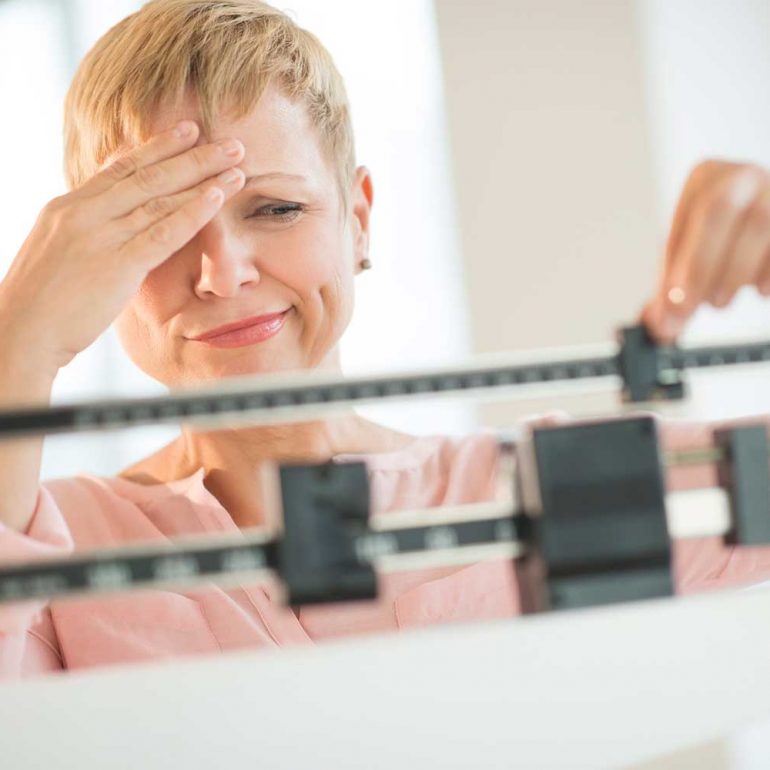Green tea can be an amazing addition to your life. Not only can it help you lose weight effortlessly, but it can also add many health benefits.
Best Green Tea Tip #2: Start Your “Tea Life”
It’s simple. All you need to do is:
-
- Select the best green tea.
- Have the best routine to drink it.
We’ll talk about how to select the right type of green tea in details later. For now, I’ll give you four ideas on how to make drinking tea as an easy, natural part of your life.
1. Wake your body up with a sip of green tea.
This is what I do every morning. I get up, boil water and throw some tea leaves into the cup. With an electric water boiler conveniently sitting on my countertop, it only takes two to three minutes for hot water to be ready. Then, I pour it into the cup, steep the tea with it for a bit, and brush my teeth. Once I’m done, I take a long sip of the tea, feel the first bit of warmth of the day, then make breakfast, and finish the remaining tea while eating.
2. Replace coffee with tea.
I know some people would hesitate to do this. If it doesn’t fit your lifestyle (say, having a morning coffee together with your significant other is an important part of your relationship), don’t do it, and you can move onto the next idea.
If you don’t mind making the switch, it is worth it. While tea and coffee both have caffeine in them, we found that people who drink three cups of tea a day have a 37% lower risk of depression than those who don’t.
Meanwhile, we also found that tea leaves (Camellia Sinensis) contain L-Theanine – an amino acid that helps the brain simultaneously relax and concentrate.
You see the difference here? Tea is a balm for the troubled souls, unlike coffee which makes your nerves jangle all day.
3. Add tea to your leisure activities.
In traditional Chinese culture, guess what you do first when a friend or family member visits you? Make them a cup of quality tea.
The best green tea in China costs more than gold, and it enamors tea collectors with its pure, calming aroma and taste. In ordinary families, even though people don’t have access to the cream of the crop, they still want to welcome their guests with some fine-quality tea.
There are so many ways you can incorporate tea into your activities – sip it while watching a movie (instead of eating popcorn), reading a book, writing in a journal, or chatting with someone over the phone. Meeting a friend at Starbucks? Order a hot green tea.
4. Drink tea after a meal.
Let me tell you why it’s an excellent idea.
As mentioned earlier, Chinese people, without the aid of any sophisticated statistical system, have concluded that green tea helps to “de-grease” our body.
The ancient scripts, if translated into modern Chinese language, have two levels of meaning:
- Green tea curbs the body’s absorption of grease and oil.
- Green tea helps you slim down.
The scientists today found evidence for both. Ancient Chinese already knew to drink green tea after a greasy meal, and they’ve passed down this tradition generations and generations to today.
Having green tea after a meal can not only help you curb absorption of fat but also help you get rid of the bloated feelings.
It also makes you feel much fuller because of the hydration you get.
Best Green Tea Tip #3: The Best Types Of Tea For Weight Loss
Many people have asked me this question, and I realized that not everyone in the United States has an in-depth relationship with green tea. Therefore, I’ll take some time to give the specific details that you need to find the best tea for yourself.
You might already know that “green tea” is the name of a big family of tea just like “rose” is the overarching name of a group of different subcategories – each with very different uses, needs, and characters.
The tea family has no less variety, if not more.
Let me simplify it by pointing you to a few types that are commonly brewed in Asia and widely available in the United States. These include Chinese Long Jing, Chinese Tie Guan Yin (a type which is between green tea and black tea and is semi-fermented), Chinese Mao Feng, Chinese Bi Luo Chun, and Japanese matcha.
These are the best green tea options that are highly accessible, and they are also pantry staples that I’ve kept for years. In addition to them, I’d like to cover another type of tea – Pu-Erh. Pu-Erh is not green tea, but due to the ways it’s processed, it has excellent slimming power from the extremely high amount of antioxidants it contains. People have reported significant weight loss from drinking it. And it’s also the tea that I have in-depth personal experience with – mainly for de-bloating and reducing inflammation in my body.
I first learned about the healing power of Pu-Erh from a TCM practitioner when I was in China. Additionally, the US National Institute of Health (NIH) has a whole list of papers done on it by highly reputable institutions from around the world. A simple Google search can help you find them.
Besides Pu-Erh, Oolong tea is another type of tea that is reported to fight obesity by increasing metabolic rate and fat oxidation in men and women. In one study in Japan, researchers found it increased energy expenditure by 10% within 120 minutes of consumption. In a study in China, researchers found Oolong tea decreased body fat content and body weight by improving lipid metabolism. Meanwhile, scientists from around the world have found evidence in other health effects of Oolong tea, including fighting inflammation, which will directly help with weight loss.
Studies with similar, consistent findings are piling up in the world’s most prestigious science databases and are firmly pointing us to one direction. However, I haven’t drunk much Oolong tea in my life due to my personal tea preferences, and I can’t tell you from my own experience what it’s like to lose weight on Oolong. Therefore, I’ll leave it to you as a potential room for exploration.
Above are some examples of tea which are well-known for their soothing, calming, and slimming effects. When you buy tea on the market, you’ll notice that there are two main types of them.
Types of Tea for Purchase
Tea bags and loose tea leaves – which is better?
The common knowledge is that the best green tea usually comes in the form of loose leaves. Tea bags are made from low-quality tea leaves in general, such as dust and fannings. In China, regular tea bags are usually priced at half compared to low-grade tea leaves. But there are exceptions. Some of the best green tea (mostly Japanese) naturally breaks down while being processed. Growing up in China, this is quite new to me, and this is when an open mind becomes helpful.
Some people asked me: how do you drink loose leaf tea without accidentally eating the leaves? There’s no downside to eating a few tea leaves. But you can avoid it.
When you pour hot water into your teacup, some tea leaves will float. After a few minutes, you’ll see most of them sinking to the bottom. If you can’t wait to have it, just blow the leaves away and sip.
You can also get a loose-leaf tea strainer. It works just like the tea bags and prevents leaves from getting everywhere.
You can use the same tea leaves three times just by pouring hot water into the cup. However, there’s a three-hour rule, meaning don’t drink the same tea after three hours have passed.
Some people asked: how about some common branded green tea like Tazo Zen?
Depends. First, are they tea bags or loose-leaf tea? And is it clear what type of green tea it is on the label? Second, some tea bags and boxes can include a mixture of tea and other ingredients. Although these ingredients are natural, it loses purity, which is an essential part of tea’s merits by Asian values.
Also, how do you know you are drinking the best green tea if you can’t get its full taste?
Even though tea bags aren’t ideal, it can still serve as a buffering zone to get you started on the lifelong healthy habit of drinking green tea.
What about green tea extract? I don’t know. Without being able to see the tea leaves, it’s tough to evaluate its quality just by reading the label.
So where should you get the best green tea?
I sometimes buy tea when I travel to Asia. I also go to online tea shops to get loose-leaf tea. There are some great online stores you can explore for building your tea collection; Republic of Tea is one of them.
Best Green Tea Tip #4: When You Should NOT Drink It
“Tea is so amazing, and I’ll have twenty cups a day every day.”
Don’t.
Regardless of all the benefits it brings, even the best green tea has its taboos, and there are times when you shouldn’t even drink it.
Let me give you a roundup of its major restrictions.
1. Do not drink green tea on an empty stomach.
Chinese and Japanese know not to drink green tea on an empty stomach because it can be painful. I’m not sure what’s the reason behind this rule because ancient scripts didn’t say anything more. But during modern days, scientists have found that green tea releases more stomach acid which promotes digestion. When you don’t have any food in your stomach, it causes a stressed stomach and heartburn. Besides that, scientists also found that when you drink green tea on an empty stomach, your liver can be hurt, too.
2. Drink green tea in moderation and with caution when you have liver diseases.
3. Do not drink green tea when you have sleeping problems.
Green tea is probably the least caffeinated tea among all types of tea. It only contains about 50% of the caffeine in black tea, and while one cup of coffee usually contains 100-200mg of caffeine (depending on the type), the same amount of green tea only contains 35mg. The caffeine contained in green tea, even though far less than coffee, can still keep you awake at night. A general rule I have is to stop drinking it by 4 pm.
4. Do not over-drink green tea when you have hair loss.
Studies have shown that caffeine is a major contributing factor to hair loss. It means over-drinking green tea might cause that issue.
5. Do not over-drink green tea when you are pregnant.
Avoiding green tea is a rule of thumb for every pregnant woman in China to follow from ancient time to today. The TCM (Traditional Chinese Medicine) scripts explain that tea, because of its cooling impact, can break the balance and harmony required within the female body to nurture an embryo. From the western perspective, the tannic acids, catechin, and caffeine contained in green tea can lead to pregnancy risks. Different from the Chinese culture, it’s considered acceptable to have a small amount of green tea (1-2 cups/day) during pregnancy.
6. Do not drink green tea when you have an iron deficiency.
A study shows that green tea consumption may cause the malabsorption of non-hem iron which are found in vegetables and grains. Therefore, if you maintain a plant-based diet and have iron deficiency, you should drink green tea in moderation.
These are a few things to remember when you consider whether or not you want to add green tea to your daily diet. I’ve covered the major downsides here. If you’d like to know more, here is a complete list with more.
How many cups of tea should you drink a day with none of the constraints above?
I usually have three to four on a good day and no more than five.
Congratulations! You’ve learned the best green tea tips for natural weight loss and are ready to experiment with them. If you have any questions, email me at leslie@riselean.com.
Part Two: here
Founder of Rice Lean, Body & Health Coach for Busy Women. In 2017, I helped 513 women across the United States and United Kingdom to lose weight based on principles of integrity, simplicity, and sustainability. It was incredibly inspiring to see how the simple wisdom from my hometown in Asia ended up completely changing people’s bodies. The truth is: when REAL weight loss happens, it happens FAST.




